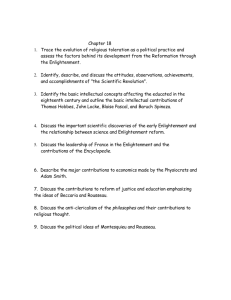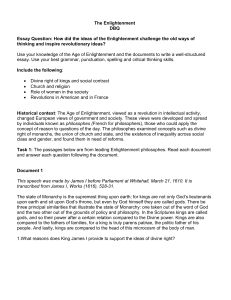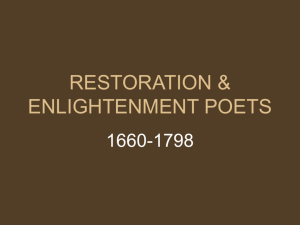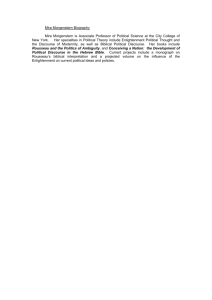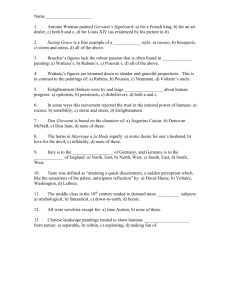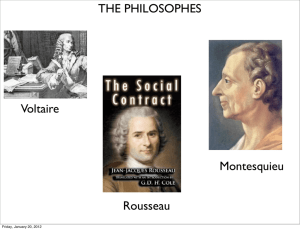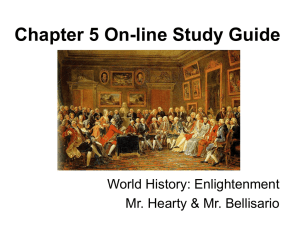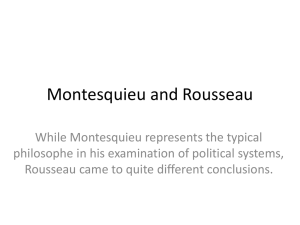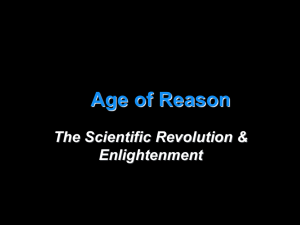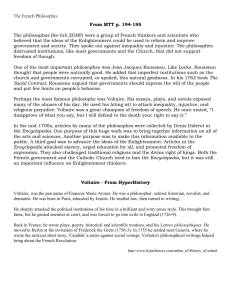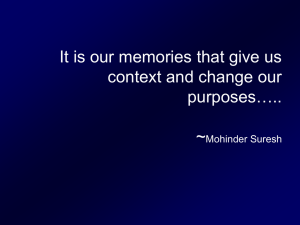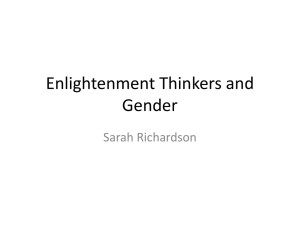Ch. 17 Enlightenment Test Study Guide Enlightenment features
advertisement
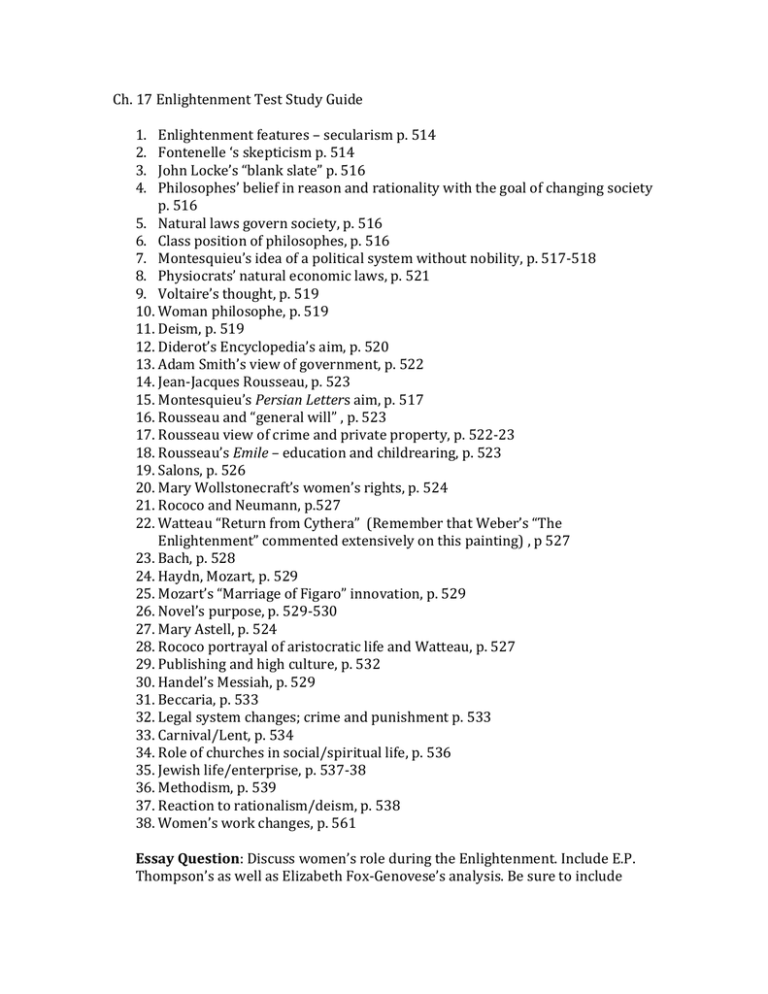
Ch. 17 Enlightenment Test Study Guide 1. 2. 3. 4. Enlightenment features – secularism p. 514 Fontenelle ‘s skepticism p. 514 John Locke’s “blank slate” p. 516 Philosophes’ belief in reason and rationality with the goal of changing society p. 516 5. Natural laws govern society, p. 516 6. Class position of philosophes, p. 516 7. Montesquieu’s idea of a political system without nobility, p. 517-518 8. Physiocrats’ natural economic laws, p. 521 9. Voltaire’s thought, p. 519 10. Woman philosophe, p. 519 11. Deism, p. 519 12. Diderot’s Encyclopedia’s aim, p. 520 13. Adam Smith’s view of government, p. 522 14. Jean-Jacques Rousseau, p. 523 15. Montesquieu’s Persian Letters aim, p. 517 16. Rousseau and “general will” , p. 523 17. Rousseau view of crime and private property, p. 522-23 18. Rousseau’s Emile – education and childrearing, p. 523 19. Salons, p. 526 20. Mary Wollstonecraft’s women’s rights, p. 524 21. Rococo and Neumann, p.527 22. Watteau “Return from Cythera” (Remember that Weber’s “The Enlightenment” commented extensively on this painting) , p 527 23. Bach, p. 528 24. Haydn, Mozart, p. 529 25. Mozart’s “Marriage of Figaro” innovation, p. 529 26. Novel’s purpose, p. 529-530 27. Mary Astell, p. 524 28. Rococo portrayal of aristocratic life and Watteau, p. 527 29. Publishing and high culture, p. 532 30. Handel’s Messiah, p. 529 31. Beccaria, p. 533 32. Legal system changes; crime and punishment p. 533 33. Carnival/Lent, p. 534 34. Role of churches in social/spiritual life, p. 536 35. Jewish life/enterprise, p. 537-38 36. Methodism, p. 539 37. Reaction to rationalism/deism, p. 538 38. Women’s work changes, p. 561 Essay Question: Discuss women’s role during the Enlightenment. Include E.P. Thompson’s as well as Elizabeth Fox-Genovese’s analysis. Be sure to include specific references to Mary Wollstonecraft, Mary Astell, Rousseau, the salons and working class women.
